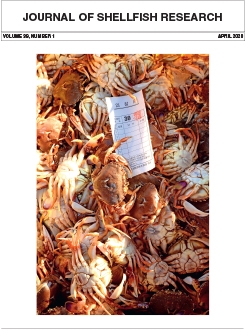The Suminoe oyster Crassostrea ariakensis and the Kumamoto oyster Crassostrea sikamea coexist and are habitat-forming ecosystem engineers in the Yangtze River estuary and its adjacent coasts. To date, little quantitative information is available on the intertidal zonation patterns of these two oysters within their native range or on the related mechanisms generating these spatial patterns. This study first carried out field surveys and laboratory experiments to explore the vertical zonation patterns of the two oysters in the intertidal habitats of northern Hangzhou Bay, assess the roles of abiotic (aerial exposure stress) and biotic (larval distribution, recruitment, and competition) factors in regulating vertical zonation and understand their driving mechanisms. At the study site, C. sikamea dominated the higher intertidal zone (approximately 6.7 h and 56% emersion/12 h tidal cycle), whereas C. ariakensis occupied the three deeper intertidal zones (mid, mid-low, and low intertidal). Mean aerial exposures of 56% and 42% represented the optimal growth zones and the lower limits of C. sikamea, respectively. The growth boundary of the two oysters was located in the intertidal zone that was exposed 42% of the time. The area with the highest C. ariakensis densities (the optimal growth zone) was the mid-low intertidal (mean: 3.0 h and 25% emersion/tidal cycle). In a laboratory 72-h aerial exposure experiment, the percentage of water loss was significantly greater for C. ariakensis than for C. sikamea after 24 h (P < 0.01), which was also supported by the result that C. ariakensis had a relatively greater dry tissue weight and lower water weight of soft tissue than C. sikamea (P < 0.001). The results from the real-time quantitative PCR examining the oyster larvae abundances found that C. sikamea and C. ariakensis larvae dominated the surface and bottom layers of water, respectively. Oyster recruits were significantly more abundant in the low intertidal zone (380.2 ± 48.6 spats/400 cm2) than in the high intertidal zone (153.2 ± 45.9 spats/400 cm2) (P < 0.05), whereas the mortality of the oyster spats recruited to the experimental plates did not differ between the high and low intertidal zones (P > 0.05). Twenty-two individuals among the 30 oyster recruits (73%) in the high intertidal region were identified as C. sikamea, and six recruits (20%) were identified as C. ariakensis. All 36 recruits (100%) in the low intertidal region were identified as C. ariakensis. It was concluded that the differential larval distribution, settlement, and post-settlement mortality along the intertidal elevation gradients served as a mechanism for vertical zonation of these two oyster species.
How to translate text using browser tools
14 April 2020
Intertidal Zonation of the Suminoe Oyster Crassostrea ariakensis and the Kumamoto Oyster Crassostrea sikamea on the Coast of the Northern East China Sea
Taoni Wang,
Ruiliang Fan,
Qiqun Cheng,
Zhaoyue Sun,
Xiumei Fan,
Nannan Li,
Xueying Li,
Weimin Quan
ACCESS THE FULL ARTICLE

Journal of Shellfish Research
Vol. 39 • No. 1
April 2020
Vol. 39 • No. 1
April 2020
China
Crassostrea ariakensis
Crassostrea sikamea
exposure
larvae
molecular
oyster




